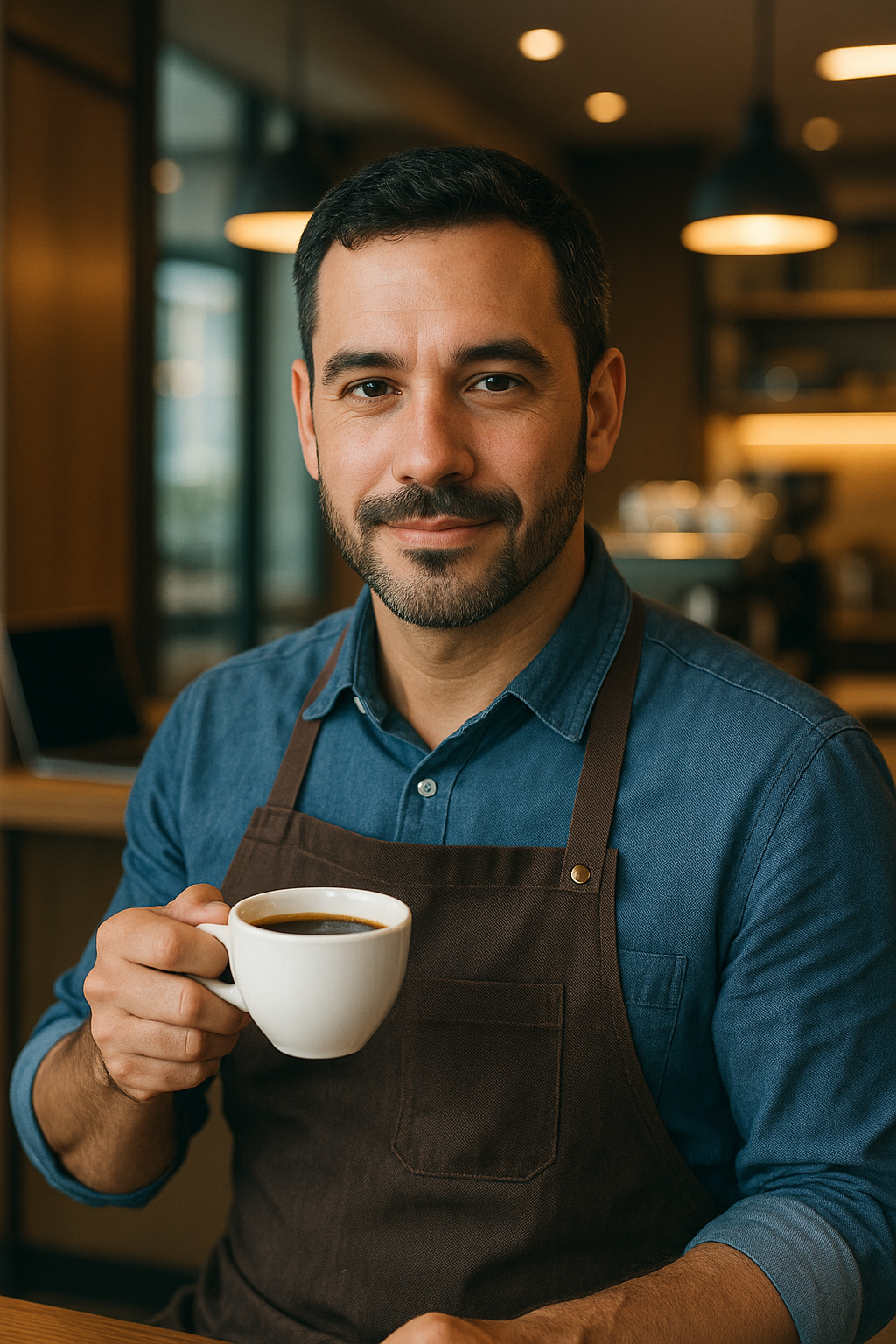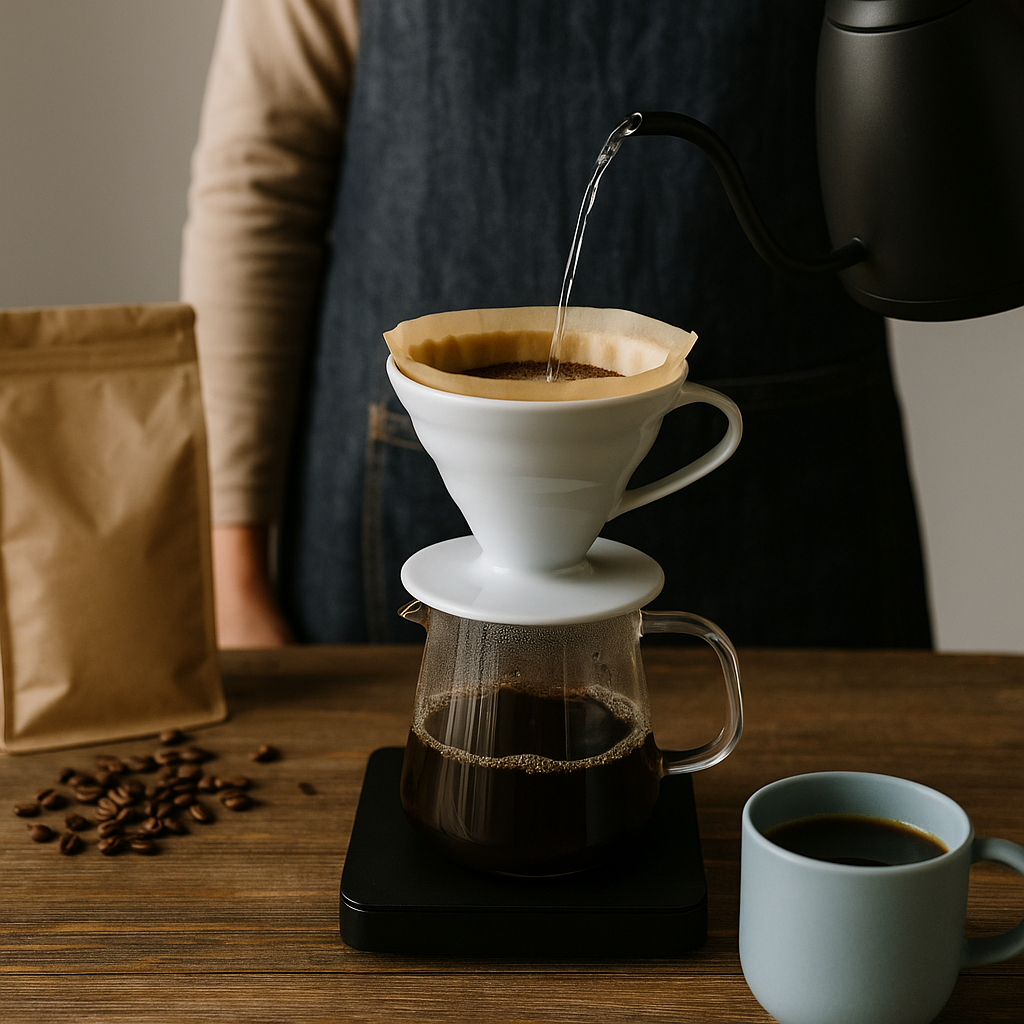You’ve probably asked yourself: why doesn’t my home coffee taste like it does at the café? Maybe it’s missing that punch of flavor, the perfect balance of acidity and sweetness, or the smooth finish that your local barista always seems to deliver.
The truth is, café-quality coffee at home is absolutely possible—but it requires more than just fancy machines.
In this guide, we’ll show you exactly how to make coffee at home that tastes like it came from a professional café—using tools you likely already have or can affordably upgrade.
No fluff, no complicated techniques. Just smart brewing and quality ingredients that make a world of difference.
What Makes Café Coffee Taste Better?
Baristas follow a strict routine: they dial in grind size, weigh every dose, bloom the coffee, time their extraction, and serve it fresh. Most home brewers, on the other hand, tend to guess measurements, use stale beans, or skip key steps like blooming or cleaning.
To match café quality, you need to focus on:
- Freshness of ingredients
- Proper ratios and measurements
- Brew method consistency
- Water quality and temperature
- Attention to small details
Let’s walk through these steps one by one.
Step 1: Choose Better Beans
Café coffee tastes great because they use high-quality, fresh-roasted beans. Many home brewers use mass-market, pre-ground blends that are months old and stored in poor packaging.
What to do:
- Buy whole beans from a specialty roaster.
- Check for a roast date (not a “best by” date).
- Choose a roast level that fits your method and flavor preference.
Tip: Lighter roasts preserve more origin flavors (great for pour-over), while medium or dark roasts offer more body and richness (great for press or moka pot).
Step 2: Grind Fresh for Every Brew
Even great beans taste dull if they’re ground in advance. Grinding exposes the coffee to oxygen, causing it to lose aroma and flavor quickly.
What to do:
- Invest in a burr grinder—manual or electric.
- Grind just before brewing.
- Match grind size to brew method (coarse for French Press, fine for espresso, etc.).
Pro Tip: Use a consistent grinder like the Timemore C2 or Baratza Encore for balanced, flavorful cups.
Step 3: Weigh Your Coffee and Water
Cafés don’t “eyeball” their shots—they weigh every dose to ensure consistency. Doing the same at home is the fastest way to improve your brews.
Suggested starting ratio:
- 1:16 – For every 1 gram of coffee, use 16 grams of water.
- For example, 20g coffee = 320g water.
Use a digital scale for accuracy and repeatability.
Step 4: Use Filtered Water at the Right Temperature
Water quality affects coffee flavor more than most people think. Tap water often contains chlorine, heavy minerals, or odors that affect taste.
What to do:
- Use filtered water or bottled spring water.
- Avoid distilled water (no minerals = poor extraction).
- Heat to 195–205°F (90–96°C) for best extraction.
Not sure about temp? Boil the water, then wait 30 seconds before pouring.
Step 5: Master the Bloom
In fresh coffee, carbon dioxide gas is trapped inside the grounds. If you don’t bloom the coffee (pre-wet it), gas escapes during brewing and disrupts extraction—leading to sour, unbalanced flavor.
How to bloom:
- Pour a small amount of hot water (2x the coffee weight).
- Let it sit for 30–45 seconds before continuing your brew.
- Then finish pouring the remaining water in a slow, even flow.
Result: Clearer, brighter, and sweeter coffee—just like at the café.
Step 6: Time Your Brew
Brewing is a chemical process that depends on time as much as it does on grind size or temperature. Brew too fast, and you under-extract. Too long, and it turns bitter.
Ideal brew times:
- French Press: 4 minutes
- Pour-over (V60, Chemex): 2.5–4 minutes
- AeroPress: 1–2 minutes
- Moka Pot: Until you hear a bubbling hiss
- Espresso: 25–30 seconds
Use a timer or stopwatch to keep your brews within the correct range.
Step 7: Choose the Right Brewing Method for Your Taste
Cafés tailor brewing methods to their beans and customers’ tastes. At home, you should do the same.
| Method | Taste Profile | Best For |
|---|---|---|
| French Press | Full-bodied, rich | Chocolatey and dark roasts |
| Pour-Over | Clean, bright, nuanced | Light and fruity coffees |
| AeroPress | Balanced and smooth | Quick, consistent single cups |
| Moka Pot | Strong and intense | Espresso-style brews without the machine |
| Drip Machine | Simple and consistent | Medium roasts, batch brewing |
Pick one that fits your taste preference—and then master it.
Step 8: Clean Your Equipment Regularly
Cafés clean their gear every single day. Oils, residue, and old grounds can ruin flavor fast.
What to do:
- Rinse gear after every brew.
- Deep-clean brewers weekly with soap or descaling solution.
- Clean grinders and filters monthly.
Clean equipment = clean taste.
Step 9: Experiment with Brewing Variables
Cafés constantly “dial in” their recipes—adjusting grind size, brew time, or water volume to get the perfect flavor from each new batch of beans.
Start experimenting with:
- Grind size (finer = stronger, coarser = brighter)
- Coffee-to-water ratio
- Bloom time and pour technique
- Brew temperature
- Brew method
Keep a coffee journal if you want to track your best results.
Bonus Tip: Improve Presentation and Serve Like a Barista
Part of the café experience is presentation. A nice mug, a warm carafe, or even latte art can elevate your home brew from “good” to “special.”
- Warm your cup before pouring
- Serve immediately—don’t let it sit on the burner
- Use a milk frother for lattes or cappuccinos
- Add simple flavors like vanilla, cinnamon, or chocolate shavings
Small details make the experience more enjoyable.
Final Thoughts: Café Quality Starts at Home
You don’t need a commercial espresso machine or a barista certificate to make coffee that tastes amazing. With attention to detail, proper tools, and a little practice, you can consistently brew coffee that’s as good—or better—than your favorite café.
Start with quality beans, grind fresh, use filtered water, and measure everything. From there, let your taste guide you. Make small adjustments. Taste often. And enjoy every part of the ritual—because at home, you are the barista.

Marcelo Oliveira is a coffee enthusiast and content creator specializing in barista skills, brewing methods, equipment reviews, coffee-related health insights, and fascinating curiosities from the coffee world. With a deep passion for every step of the brewing process, he turns technical knowledge into accessible and engaging content for both beginners and seasoned coffee lovers. Marcelo’s goal is to help readers appreciate the full experience of coffee—from bean to cup.
